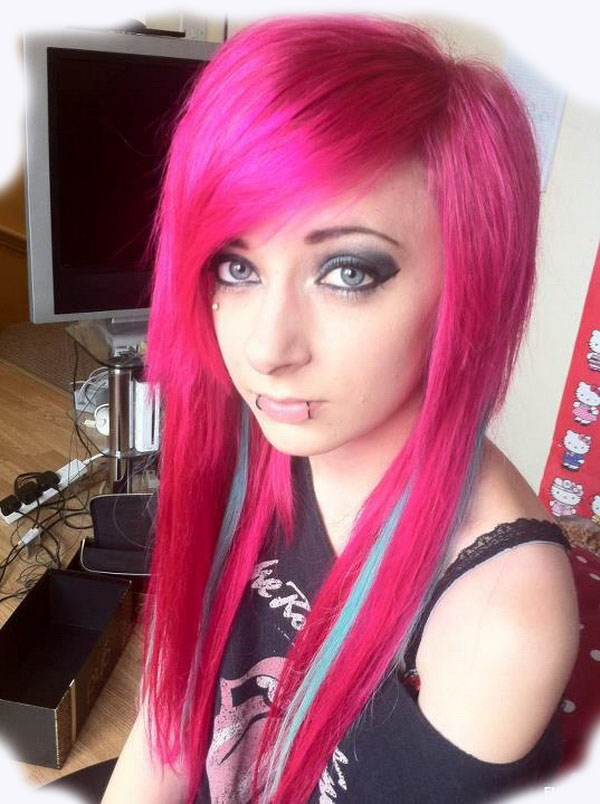Emo hair has become a cultural phenomenon that transcends mere aesthetics; it represents a subculture rich in emotion and individuality. With its origins rooted in the emo music scene of the late 1990s and early 2000s, this hairstyle has evolved into a symbol of self-expression for many. In this article, we will delve deep into the world of emo hair, exploring its history, styles, and the ways to achieve the perfect look.
As we journey through the various aspects of emo hair, we will discuss the essential tools and products needed to create and maintain these styles, along with tips on how to care for your hair. Furthermore, we will take a closer look at the significance of color and texture in emo hairstyles, and how they can be adapted to suit different personalities and preferences.
Whether you are a seasoned member of the emo community or simply curious about this unique hairstyle, this guide aims to provide valuable insights and practical advice. So, let’s dive into the world of emo hair and discover how it can be a powerful form of self-expression!
Table of Contents
- 1. History of Emo Hair
- 2. Popular Emo Hair Styles
- 3. The Importance of Color
- 4. Texture and Layering Techniques
- 5. Caring for Emo Hair
- 6. Essential Tools and Products
- 7. Adapting Emo Hair to Your Personality
- 8. Conclusion
1. History of Emo Hair
Emo hair originated in the late 1990s and early 2000s alongside the emo music genre, which was characterized by its emotional lyrics and expressive performances. The hairstyle became synonymous with the emo subculture, serving as a visual representation of the feelings and attitudes associated with this music style.
Initially, emo hair was all about long, shaggy layers, often styled with dramatic bangs that swept across the forehead. The look was often completed with vibrant colors, which helped to distinguish emo individuals from mainstream culture. Over the years, emo hair has evolved, with new styles and techniques emerging to reflect changes in the emo scene.
Key Influences on Emo Hair
- The rise of emo bands like My Chemical Romance and Fall Out Boy.
- Fashion influences from punk and goth subcultures.
- The impact of social media platforms in promoting emo aesthetics.
2. Popular Emo Hair Styles
There are several popular styles associated with emo hair, each with its own unique flair. Here are some of the most recognized emo hairstyles:
Classic Emo
The classic emo hairstyle features long, straight hair with side-swept bangs. This style is often characterized by a choppy, layered cut that adds texture and movement.
Scene Hair
Scene hair is a more exaggerated version of emo hair, often featuring vibrant colors, extreme volume, and dramatic styling. This style embraces boldness and creativity.
Short Emo Styles
While many associate emo hair with long locks, short emo hairstyles have gained popularity as well. These styles often include choppy layers and sharp bangs, creating a striking look.
3. The Importance of Color
Color plays a crucial role in defining the emo hairstyle. From deep blacks and vibrant reds to pastel shades, the choice of color can greatly impact the overall aesthetic. Here are some popular color choices:
- Jet Black
- Bright Red
- Electric Blue
- Purple and Lavender
- Pastel Pink
4. Texture and Layering Techniques
Texture is essential for achieving the perfect emo hairstyle. Layering techniques can add depth and dimension, allowing for versatile styling options. Here are some key techniques to consider:
Choppy Layers
Choppy layers create movement and can be styled for a more relaxed or edgy look. This technique works well with both long and short hair.
Texturizing Products
Incorporating texturizing sprays or pomades can enhance the look of emo hair, providing hold and definition without weighing the hair down.
5. Caring for Emo Hair
To maintain healthy emo hair, proper care is essential. Here are some tips for keeping your hair in top condition:
- Regular trims to prevent split ends.
- Using sulfate-free shampoos to maintain color.
- Deep conditioning treatments to nourish the hair.
- Avoiding excessive heat styling.
6. Essential Tools and Products
Having the right tools and products can make all the difference in achieving the perfect emo hairstyle. Here are some essentials to consider:
- Hair straighteners for sleek styles.
- Round brushes for volume.
- Texturizing sprays for definition.
- Hair dyes and bleaches for vibrant colors.
7. Adapting Emo Hair to Your Personality
While emo hair has distinct features, it’s important to adapt the style to reflect your individuality. Consider the following tips:
- Choose colors that resonate with your personality.
- Experiment with different lengths and textures.
- Incorporate accessories like hair clips or headbands.
8. Conclusion
In conclusion, emo hair is more than just a hairstyle; it’s a form of self-expression and a representation of a vibrant subculture. By understanding the history, styles, and care associated with emo hair, individuals can create a look that reflects their unique identity. Whether you’re looking to make a bold statement or embrace your inner emotions, emo hair offers endless possibilities.
We encourage you to share your thoughts in the comments below and let us know your favorite emo hairstyles! Don’t forget to check out our other articles for more tips and inspiration!
Thank you for reading, and we hope to see you back here for more exciting content!
Varoom Pokémon Evolution: A Comprehensive Guide
The Ultimate Bunny Modules: A Complete Guide To Understanding And Implementing Them
Exploring The Life And Career Of Dominique Bourgeois Robertson
